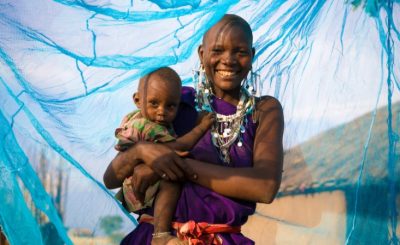GUEST COLUMN By Randall Kramer and Leonard Mboera
Durham, NC — The latest statistics show impressive progress in the fight against malaria — a 46 percent decrease in infections among children in sub-Saharan Africa and an estimated 4.3 million deaths averted globally.
A substantial increase in international funding has contributed to those achievements. The U.S. government is among the major funders of malaria control through its President’s Malaria Initiative – one of the few international assistance programs that has garnered bipartisan support through the Bush and Obama terms.
But malaria remains a leading cause of death in poorer and tropical parts of the world. Eliminating it as a major global disease threat would require doubling the current $3 billion spent annually.
In the face of so many other pressing needs, why should we continue to invest in malaria?
In the last year, nearly 200 million people suffered from malaria, and its death toll—more than 500,000—was 50 times greater than that of the widely publicized outbreak of Ebola in west Africa. And malaria takes a particularly devastating toll on babies and children. More than 80% of the deaths are in children under five. Those who manage to survive often suffer lasting effects on development, school performance and lifetime earnings.
Without continued financial support, we can expect to see these losses from this resilient killer potentially rise – and their geographic range spread. Malaria is a persistent killer, and with temperatures steadily increasing throughout the world as a result of global warming, malaria-transmitting mosquitoes have begun to take residence in new regions, raising the specter of malaria spreading far beyond its current boundaries.
In addition to the physical suffering malaria causes, the disease stunts national economic progress. Studies by Colombia University economist Jeffrey Sachs suggest that, if not for malaria keeping children out of school and agricultural workers out of the fields, the rate of economic development in sub-Saharan Africa would have been much higher in the past few decades.
One of the most effective malaria control measures has been the free distribution of hundreds of millions of insecticide-treated mosquito nets that protect people from mosquitoes while sleeping. In 2004, only 3% of at-risk people in sub-Saharan Africa had an insecticide-treated mosquito net available to them, compared to 49% in 2014 after an international campaign.
The goodwill generated from investments in mosquito nets and other malaria-defeating approaches by international donors is substantial. As one community member told our research team in rural Tanzania, “Mosquito nets have been a great help to us. The day when mosquito nets were distributed, people were very happy, because many people in our community could not afford to buy the mosquito nets.”
The malaria parasite, a resilient and opportunistic pest, has successfully co-inhabited with humans for thousands of years, and it continues to adapt and evolve, damaging populations and economies across the globe. We now have the knowledge, technology and health systems to significantly reduce its devastating human impacts. But putting these assets into action will require renewed political will and financial commitment from rich and poor countries around the globe—including the United States.
Randall Kramer is professor of environmental economics and global health at Duke University. Leonard Mboera is chief scientist at Tanzania’s National Institute for Medical Research.

